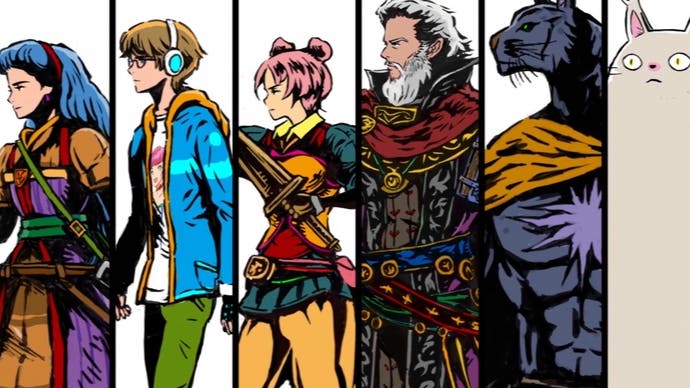Dungeon Encounters review - all-star team assembles for one of Square Enix's best RPGs in an age
The man behind FF6, FF9 and FF12 makes his long-awaited comeback.
There are some names in the realm of JRPGs that are next to royalty: Yuji Horii, Hironobu Sakaguchi, Nobuo Uematsu and, if you're of a certain vintage, Hiroyuki Ito. Okay, so perhaps Ito's not so much a household name, but a look at his CV should assure you of his credentials; this is the man who invented the Active Time Battle mode that's been a mainstay of the Final Fantasy series and more than that this is the director of Final Fantasy 6, Final Fantasy 9 and Final Fantasy 12. No matter where you stand on what the very best Final Fantasy game might be (it's Final Fantasy 12, by the way), I'm sure you can agree that those three earn themselves a place among the greatest we've seen to date.
And for almost 15 years now, Ito's whereabouts have been something of a mystery, frequently picked at by Final Fantasy's fanbase, his name only fleetingly appearing in the credits of a handful of mobile projects or as special thanks in bigger games. There was some speculation he might emerge as part of the Final Fantasy 16 team, given how it leans into the more classical era of the series Ito is associated with, though when its reveal finally came to pass there was no mention of one of the grandees of the series.
But then, seemingly out of nowhere, something bizarre happened. On October 1st, Square Enix put out a trailer for a new project called simply Dungeon Encounters (a name so nondescript I'd forgotten it since starting writing this piece and had to go and double check), a shall-we-say minimalist JRPG that looks like its budget might not have been too much more than the £20 that's being asked for it on the eShop and whatever other digital stores you might frequent. It might have been entirely unremarkable, if it weren't for the project's director: one certain Hiroyoku Ito.
The game, you won't be surprised if you've any affinity with his prior work, turns out to be quite remarkable itself: an RPG that's aggressively stripped back until there's nothing but the bare essentials, and a dungeon crawler that explicitly feels like it's been scrawled together with pen and parchment. It reminds me, in many ways, of Yasumi Matsuno's own offbeat hymn to RPGs of paper and pen, 2012's Crimson Shroud - a game that was similarly pared back, and an antithesis to the overblown, grandiose adventures associated with the series that made both developer's names.
They're also both games that, despite their stripped back nature, feel as opulent as anything else you'll find in the genre. The premise here is disarmingly simple - there are 99 floors of a dungeon to chart, each told in crude blank squares etched on paper which you then ink out with every step, each full of enemy encounters. Some floors are patrolled by grossly overpowered foes; some are simply infested with cannon fodder with which you can grind your party through the levels so that they might be better prepared for what lies in wait next time they descend the stairs and go deeper and deeper down.
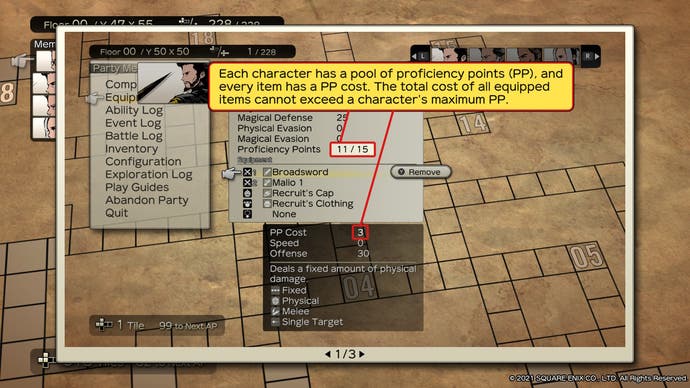
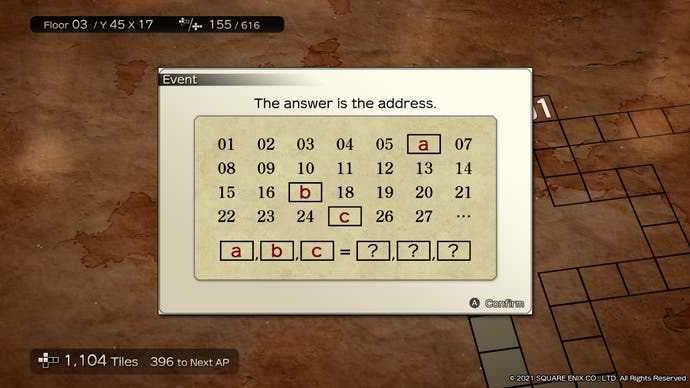
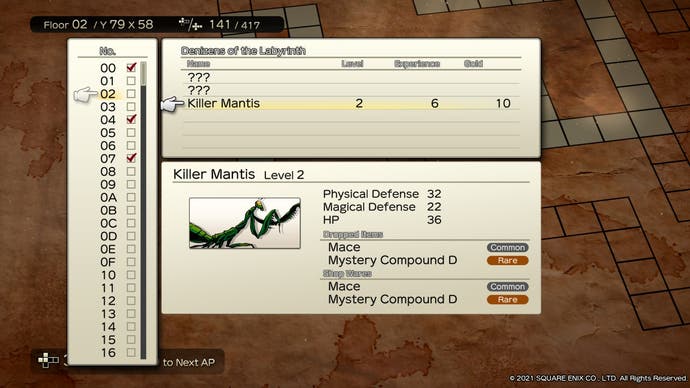
There are crinkles to be found here, though they're all tastefully slight; you get to choose your party at the outset from a list of pre-rolled candidates, and out on the floors of the dungeon you'll find other members ready to recruit wandering around, their coordinates helpfully displayed in-menu should you want to hunt any of them down. The battle system itself is also a thing of simple beauty - Ito's ATB counters return to space each turn-based encounter out, while you'll have to juggle attacks to work through physical and magical defence before you can whittle away at an enemy's health points.
All this is told by static character art that, for its economy, still feels plenty characterful, thanks surely to the fine penwork of Ryoma Ito - another Final Fantasy stalwart, and one who previously worked on Final Fantasy 12's art design and other associated Ivalice outings such as Revenant Wings and Final Fantasy Tactics Advance. It's one of several links to that beloved age for the series, with another supplied by Final Fantasy 12 producer Hiroaki Kato, one of the people who helped usher that game's brilliant gambit system into existence.
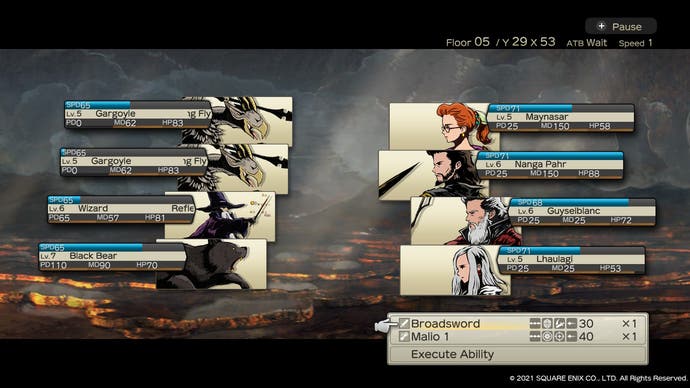
Dungeon Encounters isn't exactly a companion piece to Final Fantasy 12, but it's a fascinating counterpoint to it. Whereas that particular game could famously play itself, exposing the mechanisms behind so many RPGs and allowing you to tinker and toil with them until you've conjured and refined a beautiful machine of your own, Dungeon Encounters strips all of that back until you've got what amounts to a playable spreadsheet - a description that might have some running a mile, yet one that has someone like myself running headstrong and deliriously happy into its arms.
This is a curious take on the RPG, then, and one that due to its no frills approach will be an acquired taste. For over a dozen hours its simplicity has kept me enthralled and entertained, though, and I imagine it'll do so for dozens more to come. Few other RPGs are so quick to the action, or to the fundamental draw of numbers you're encouraged to guide ever upwards, and as unexpected it is as the return of a grandee of the genre it's somehow befitting of Ito's considerable legacy. And that, if you're aware of his significance, is surely all you need to know about this remarkable little game.
